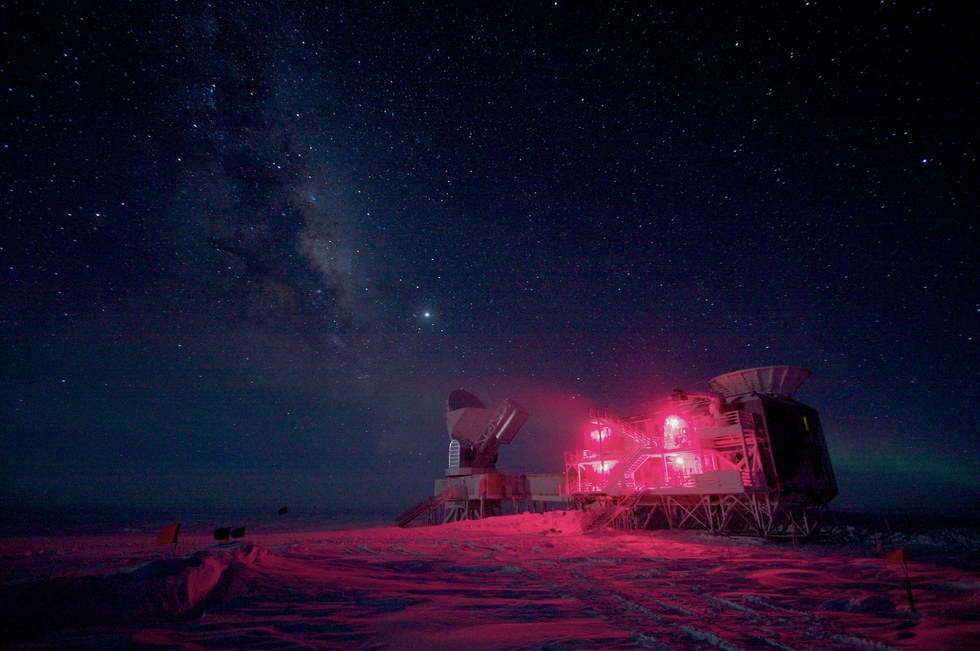The South Pole is a harsh environment, but it's excellent for astronomy due to its dry atmosphere (water vapor interferes with observations). Researchers at the Harvard Smithsonian Center for Astrophysics are even considering building a telescope at a site called Dome A, about 1,000 miles from the pole and a long trek from habitation.
What is it really like to work down there for up to a year, which is the typical over-winter stay of Antarctic personnel? According to University of Toronto experimental cosmologist Keith Vanderlinde, who spent 11 months there over the winter, it attracts a certain type of person who doesn't necessarily need the company of other people to work well. His group vacillated between being super-social in shared quarters, and choosing to retreat individually to their own quarters. He also saw people "going toasty" (this Antarctic slang for changed behavior comes from bread turning into toast) as they grappled with months of isolation away from families.
"People who didn't work outside at all, they got toasty very quickly. You develop a short fuse," Vanderlinde told Seeker. "People develop a 1,000-mile stare and stare at the wall for an hour and not do anything."
Vanderlinde came to the National Science Foundation-funded South Pole Telescope in 2008 after his Ph.D., when the facility was just in its second year of operations. It was a half-hour trek from the living quarters to the telescope, where Vanderlinde and a colleague checked in to make sure the telescope was staying healthy. Overall the work went well, except for occasional mechanical issues. He recalled, for example, one time when the power went out on a Sunday night, which required a long warm-up procedure that Monday to get the telescope up and running again.
 |
| The South Pole Telescope during Antarctic night |
"By looking at these little shadows, you can figure out where all of the largest structures in the universe are," he said. Over time and with observations from the South Pole Telescope's first camera, he said, scientists can also learn how galaxy clusters grew in different eras of the universe, and how dark energy — the ill-understood force that is causing the universe's expansion to accelerate — works.
The second-generation camera on the South Pole Telescope measures the intensity of the light and polarization, or how light is oriented related to the direction where it came from. As the CMB is lensed through galaxies and other structures, scientists can measure how large clumps of matter form over time, which in turn tells them how gravity works. Oddly, he said, tiny particles called neutrinos significantly impact how structure forms in the universe, and how gravity pulls gas and dust together into clusters and galaxies. So by looking at the big scale, scientists can better constrain how massive neutrinos are.
Read more at Discovery News

No comments:
Post a Comment